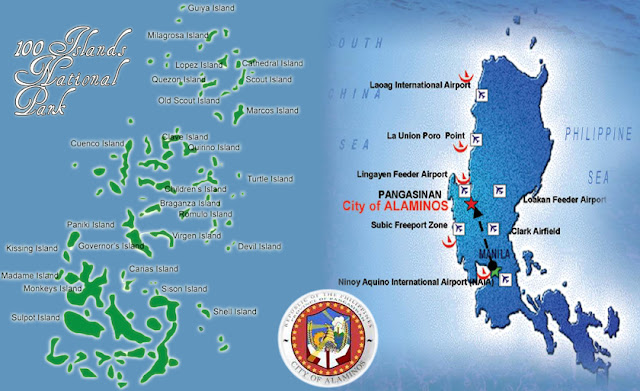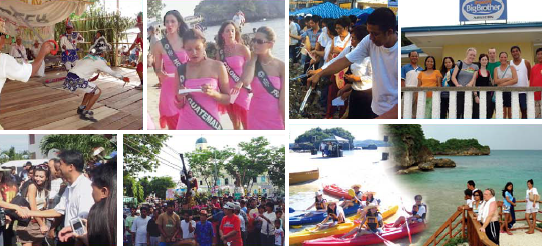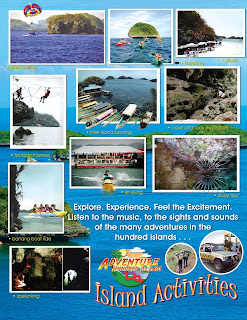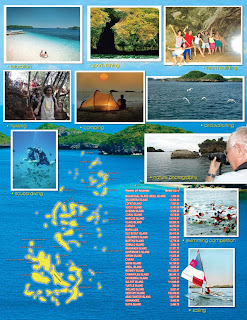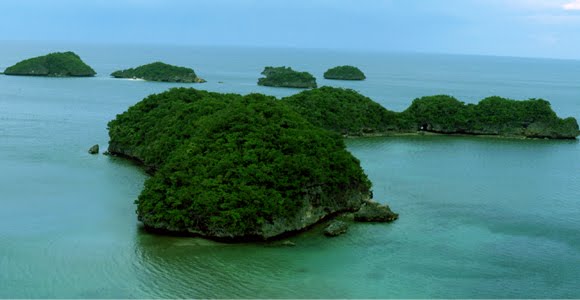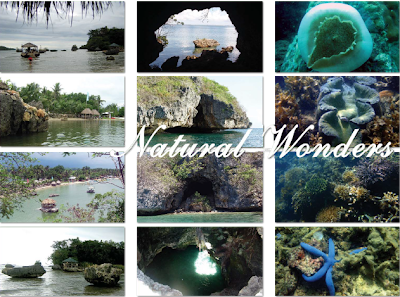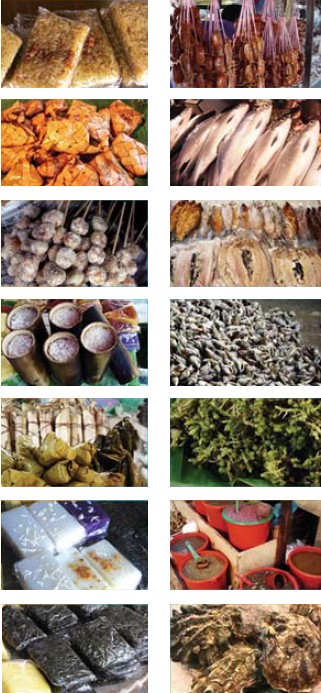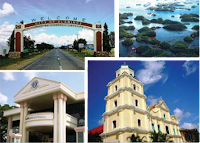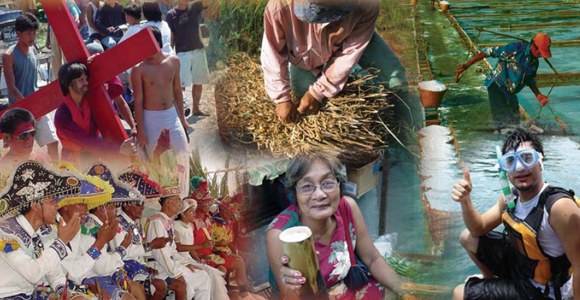An area made up of four administrative regions occupying half of Luzon offers a smorgasbord of investment prospects from gold mining to sea farming and food processing. Each province has its own strengths and potential niche in the investment market.
The main problem in the past was the dearth of information on what those provinces have to offer to local or foreign investors — big, medium and small.
The shortcoming is getting corrected as a cash-strapped government hammers up partnerships with the private groups in evolving more focused investment promotions initiatives for the super-region.
One such initiative was the drawing up last year of a tourism investment program for the Ilocos - Cordillera tourist corridor that includes the province of Pangasinan, and its premier tourist destination the Hundred Islands of Alaminos City.
Why and where to invest in Alaminos City?
No other city in the Philippines other than Alaminos, and maybe few in the world, holds the distinction of having a globally known tourist spot, the Hundred Islands, while the host city remains in relative obscurity.
The city is dead set, however, to ride on its unique natural allure as its trademark in earning a bigger niche in the tourism trade. It is no wonder that the city government has been strongly pushing for investments anchored on eco-tourism.
It has succeeded in getting the services of Palafox Associates (see related story in the next page). Prior to Palafox, the city leaders from its first city mayor to the incumbent have evolved an investment zoning plan that divides the city for focused investments based on the strengths of clusters of villages or barangays.
The city has been divided into seven investment zones. Four coastal villages outside the protected area that covers the Hundred Islands have been classified for aqua-marine-based industries.
A larger segment of the town made up of six other coastal villages fronting the popular islands make up the tourism zone. The rolling-hill barangays nearby of four villages have been set aside for commercial forest plantations, orchards, recreation and amusement parks.
Three barangays in the downtown area is the commercial center, and behind it, in two sparsely populated section of the city, light industries are to be built.
Still the widest section that make up the rest of the inland area and suburbs, are devoted to agriculture, 26 barangays in all. Sixteen of them flatland, both irrigated and rain-fed, are devoted to rice, corn and other high value farm crops while the rolling hills are for livestock raising and orchards.
Out-of-the Box Tourism
The city government gained direct management of the Hundred Islands National Park from the Philippine Tourism Authority on September 29, 2005 by virtue of Executive Order No. 436 issued by President Gloria Arroyo last June 24, 2005 transferring the management, administration and maintenance of the HINP to Alaminos City. The city government has focused on tourism as its flagship investment area. It has expanded the tourist zone to include Bolo Beach, Telbang and Victoria for resorts, retirement villages and other nature-friendly investment projects fronting the island clusters.
As the crowd of guests drawn in multiply, support services and micro and small industries have been anticipated and encouraged to mushroom.
It has poured in public resources for additional cottages on some of the islands, floating bridges across some of the islands, renovated existing pavilions and upgraded other support facilities to add comfort to visitors. It is also professionalizing services in the acquired hotel, restaurant and other facilities turned over by the Philippine Tourism Authority.
It has likewise lined up the building of the Lucap Wharf Boardwalk project that will serve as a viewing point,promenade park and common eating place for tourists. The accent in the out-of-the-box tourism development for Alaminos City is in ecotourism.
It has lined a plethora of water sports, old and new festivals, spelunking, bird watching and other fun-filled and outdoor activities that are meant to attract a bigger number of daily foreign and local tourists at reasonable rates. Ongoing festivals include the City Fiesta and Homecoming, Hundred Island Summer Camp, Images of the Hundred Islands, and Island Adventures.
As guests multiply, support services and micro and small industries have been anticipated and encouraged to mushroom. These include food, souvenir items, water sports paraphernalia and about every item or services to answer the needs of guests.
The bigger ticket and medium investments would be in beach resorts, shopping and rental centers, recreational facilities, specialty restaurants, hotels, inns and vacation and retirement villages, tour and travel services, and other institutional services to foreign and high-end local tourists.
The strategic investments lined up include: the Hundred Islands Underwater Marine Theme Park; the roll-on,roll-off seaport in Victoria; the Alaminos Regional Airport at Alos; a potable water project; expansion of telecommunications facilities; real estate development catering to tourists and a growing and getting more affluent population and world-class hotels and resorts.
Commerce and Light Industries
The city government has drawn a plan for the construction of an integrated bus terminal and supermarket in preparation to the influx of tourists as a result of the on-going tourism development program and projects.
The terminal and market would not only expand commerce and trade in the city but will be the unifying economic activity that ties together all the investment zones. The market will serve as the wholesale outlet of the farm and fishery sectors, the distribution center of consumer and other basic goods for satellite towns, a multi-sport gymnasium and information center for tourists, and the immediate outlet for slight industries that would locate in the city.
The light industries have been envisioned to add value to the products and services of the farming and aquamarine culture communities. Some are seen to engage in food processing and storage and other light industries that draw strengths from the resources and produce of the city and nearby towns. But also welcomed are knowledge-based industries like call centers and business process outsourcing outfits.
Farm and Forestry
The city leaders have prepared its rural residents to the challenges of the new economic order by clustering farmers into groups of larger production units tilling eight hectares each employing modern and environment-friendly methods, and raising high value crops at economies of scale. This has prepared them for partnerships with established or new fresh and processed food companies including restaurant chains and exporters.
Orchards and tree plantations are being pushed either to be developed for farming hobbyist to enjoy an active and fulfilling rural life in a tourist town with the basic comforts of modern society, wood-based industries that are running out of wood and other forest-based raw materials and plain nature lovers who want to share, not only enjoy, a natural, safe and healthy habitat.
To complete the food self-sufficiency programs of the city and its satellite towns, its farming industry is enhanced through its Bayanihan Integrated Program for Sustainable Agriculture (BIPSA) or more popularly known as Agri-Volution aimed at creating a new green revolution and a vibrant livestock and poultry industry which forms part of the integrated development plan. Investments could be small, home-based and family-owned, or medium, corporate or contract farming with the big players.
Fishery
The fishery resources are opened for the creative investors as the city fine-tunes its coastal management plan. The bottom line is the sustainability, people-oriented and environment friendliness of the investment project, be it a fishpond, a fish pen, a seaweed farm, a cultured pearl farm or storage or canning projects.
Good Governance
The city has been putting in place a system of governance that is investment and business friendly. It is a system of processing business related permits and licenses that is cheap, fast and without hidden costs through the employment of information technology and a pool of public servants trained to help make business prosper.
At the end of the day, excellent governance in any city or town equals progress with equity and sustainable development.
The Road Ahead
Much of what have been planned at building a modern green city are still dreams, not yet on the ground. The logistical needs are enormous. City leaders realize that on their own, the people of Alaminos could accomplish only so much. With partners in the rest of the Philippines and elsewhere, much more can be done, and done fast.
The city leaders have therefore decided to seek partners among development institutions, believers, tourism entrepreneurs, developers, international hotel chains and those who are convinced that investing in nature-friendly projects is worth the risk, and a smart business decision to preserve undeniably the world’s eight greatest wonder, the Hundred Islands.
Alaminos.gov.ph













